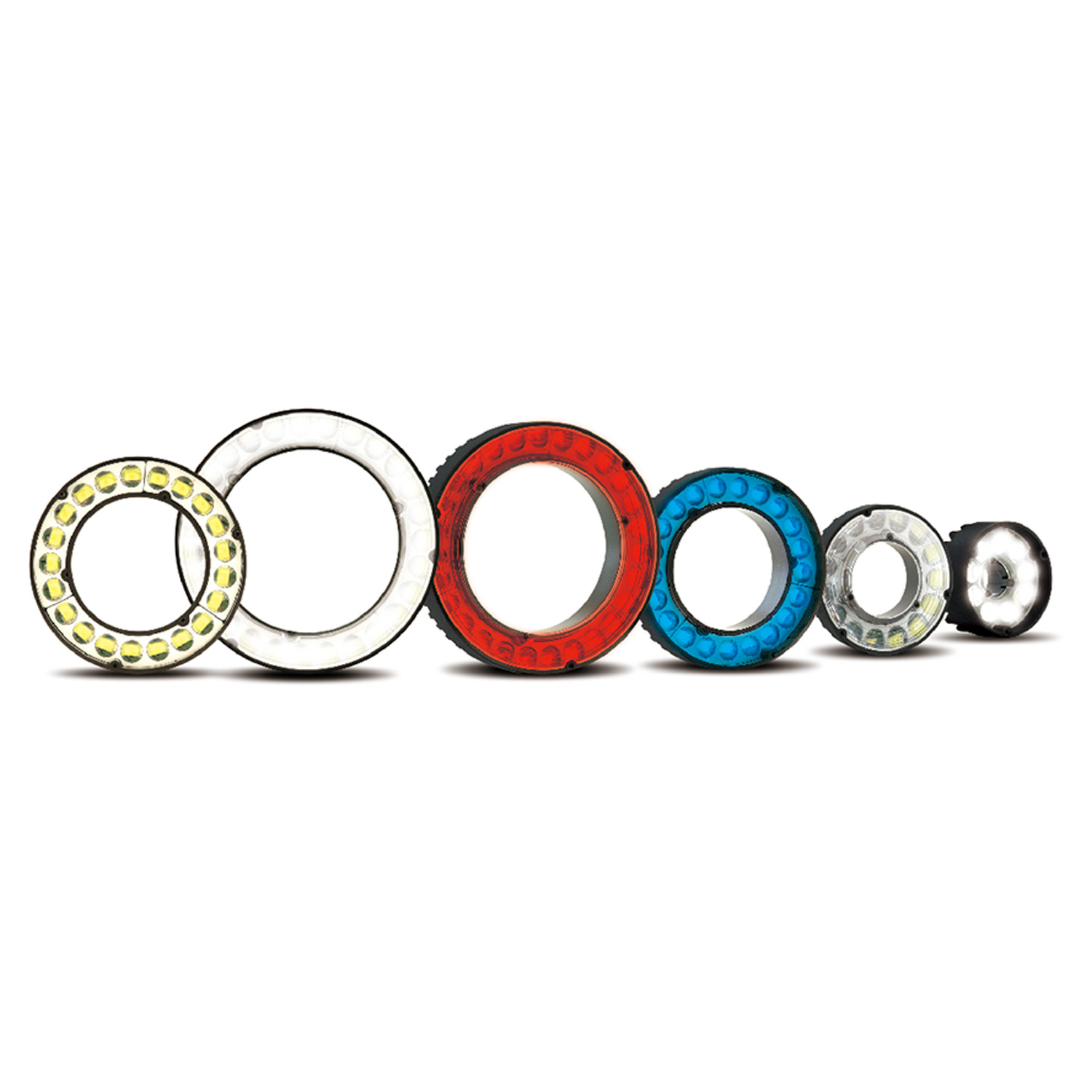
OPR Series
Features
 Built-in “FALUX” circuit to correct variations in brightness
Built-in “FALUX” circuit to correct variations in brightness
*Included in all models.
Using the constant current circuit dependent on the input voltage, variations in the forward current of individual LEDs are corrected for uniform brightness.
Meanwhile, the temperature compensation circuit compensates for fluctuations in brightness due to increases in temperature after lighting or changes in the ambient temperature.
FALUX not included
In order to reduce LED forward voltage variations, the LEDs needed to be sorted according to their Vf measurement. Moreover, illumination efficiency dropped as the temperature increased, reducing the brightness.
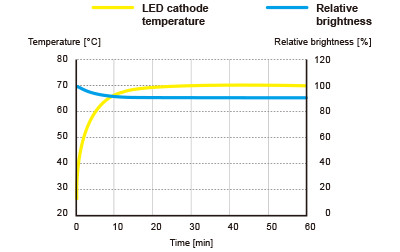
FALUX included
The brightness of each LED is fixed, virtually eliminating variations in brightness following increases in temperature. Whether with continuous illumination or ON/OFF control, brightness remains fixed.
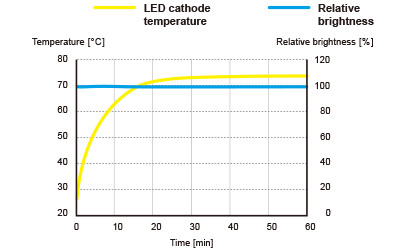
 Equipped with “FALUX sensing” for monitoring brightness and temperature through sensing
Equipped with “FALUX sensing” for monitoring brightness and temperature through sensing
LED brightness sensing is performed using multiple built-in photodiodes. This allows for accurate measurement of LED brightness not only during continuous illumination but also with short period illumination. Absolute brightness is stored in the lighting’s internal memory to allow for instrumental error adjustment.
“FALUX sensing” also makes it possible to measure both the LED brightness of lighting and the internal temperature, and then to monitor those measurements on the controller side.Based on the monitored values, feedback control can also beperformed from the OPPF Series controller, making it possible to maintain the factory default brightness for around 40,000 hours.
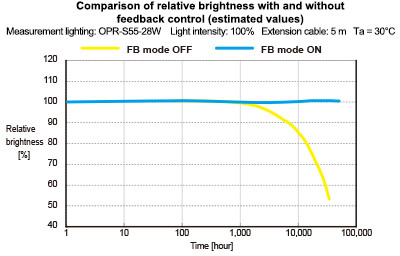
3-way illumination with attachment lenses - wide, condensed, and low-angle
The aluminum die-cast case is equipped with an LED board with a built-in sensor.
The first fixed lens optimizes the directivity angle of the LED, and the attachment lens can be used to switch the illumination angle.
At the same time, the fixed lens guides the light toward the photodiodes, which makes highly accurate sensing possible.
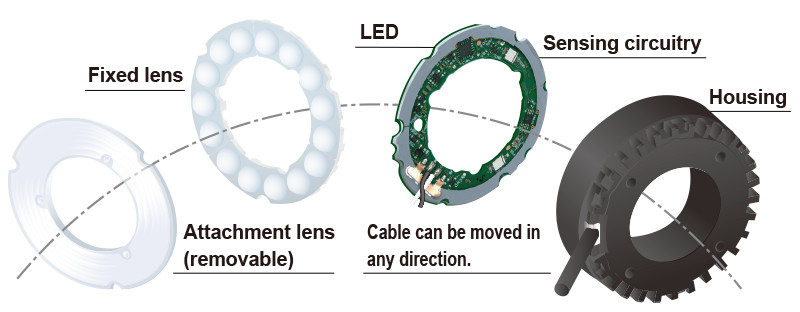
Wide
The condensing attachment lens can be removed for direct illumination with a wider field of view obtainable as the distance is increased.
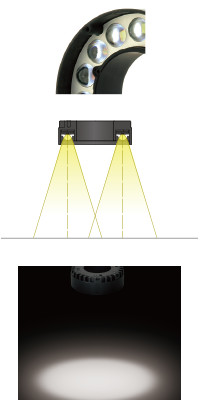
Condensed
Using the condensing attachment lens to tilt the illumination angle 20° to the inside allows for short-range, high-illuminance focusing.
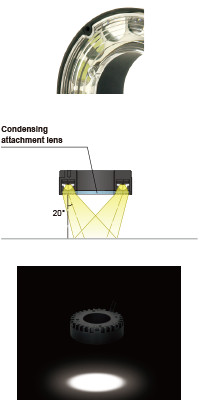
Low-angle (options)
The low-angle attachment lens can be used to tilt the illumination angle 55° to the inside for compatibility with darkfield illumination to facilitate detection of scratches, dirt, and other factors.
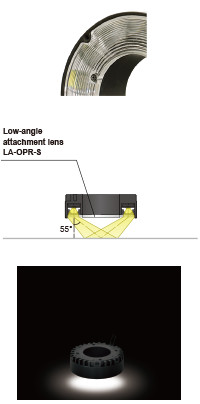
Lighting Work-Distance (LWD) and Field of View (FOV)
The optimuml light working distance and field of view can be selected in the condensed and low-angle modes with the attachment lens attached or in the wide mode with the lens removed.
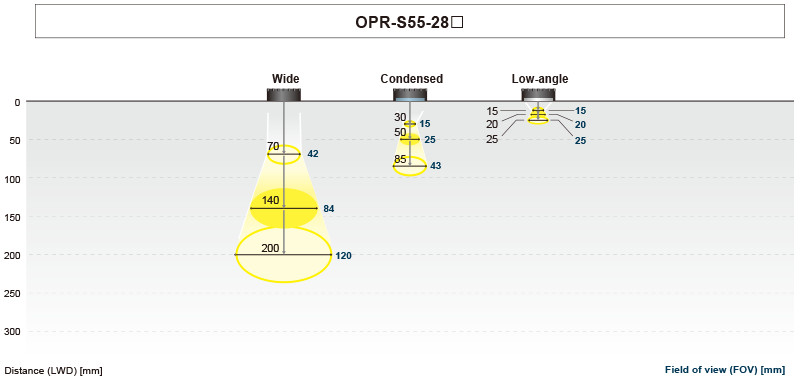
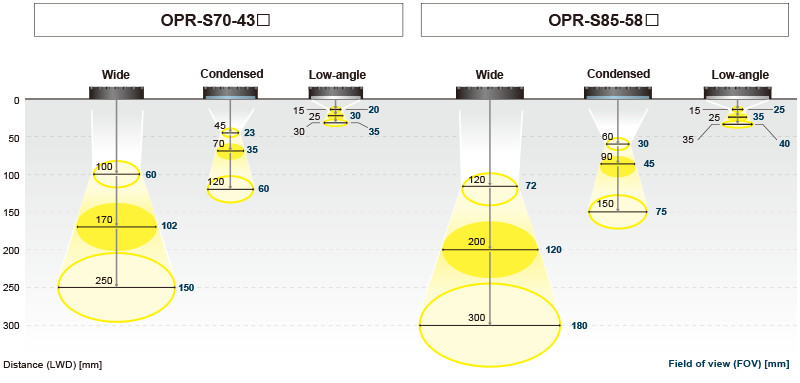
Applications
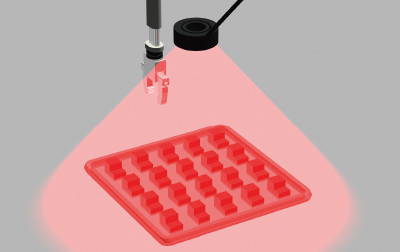
Picking up from pallets
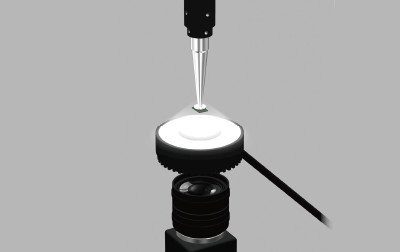
Alignment of electronic components on suction nozzle tips
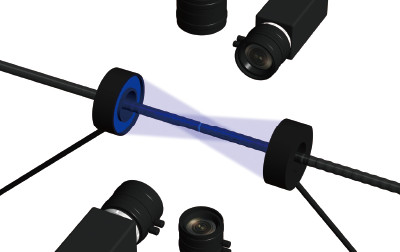
Visual inspection of medical endoscope tubes
Products
-
Machine Vision Applications
Ring
Low-angle Ring
Waterproof Ring
Bar (Area)
Low-angle Square
Flat
Flat Dome
Line Pattern
Dome
Coaxial
Cylinder
High Power Strobe
UV Lights [Ultraviolet Lighting] / Violet Light
IR Lights [Infrared Lighting] (under 1000nm)
IR Lights [Infrared Lighting] (over 1000nm)
Spot
Fiber Heads
Light Source Unit
Line (Convergent Lighting)
Line (Diffused Lighting)
Line (Oblique Angled Lighting)
Reference Light Source
Lights for Fringe Interference Inspection
Custom Order Product
Intensity Control Units [Light Units with Intensity Control Unit ]
OLED(CCS-LT)
Effilux Products
Basler Camera Light Series
- BCL Series (Bar Light)
- BCR Series (Ring Light)
- BCBL Series (Flat Light)
- BCF Series (Flood Light)
- BCL Series (Bar Light) Diffusion Plates
- BCR Series (Ring Light) Diffusion Plates
- BCF Series (Flood Light) Transparent Plate
- BCL Series (Bar Light) Light Polarizing Plates
- BCR Series (Ring Light) Polarizing Plates
- BCF Series (Flood Light) Polarizing Plates
- BCR Series (Ring Light) Light Adapter
- BCL Series (Bar Light) Light Bracket
- Basler Camera Light dedicated cable
-
Control Units
Digital Control Units
Strobe Unit
High Power Strobe Control Unit
PoE Enabled Controller
Controller with EtherNet/IP Interface
LED Light Controller
Control Units [for the HLV Series]
High-capacity Constant-current Control Units
High-capacity Analog Control Unit
Control Units [for CCS AItec]
-
Cables
Straight Cables
2-way Cables
4-way Cables
Robot Cables
2-way Robot Cables
4-way Robot Cables
Straight Cables [EL connector type]
2-way Cables [EL connector type]
Extension Cable [for PF Series]
Straight Cables for metal connector (7 pins)
Straight Cables for metal connector (37 pins)
Straight Cables for M12 connector
External Control Cables
Relay Connector
AC Power Cable
-
Options
Filters
Diffusion Plates
- Diffusion Plates [for Ring Lights]
- Diffusion Plates [for LDR-PF Series]
- Diffusion Plates [for LDR-PF-LA Series]
- Diffusion Plates [for Low-angle Ring Lights]
- Diffusion Plates [for Bar Lights]
- Diffusion Plates [for LDL-PF Series]
- Diffusion Plates [for HLDL3 Series]
- Diffusion Plates [for LB Series]
- Diffusion Plates [for Coaxial Lights]
- DF Series
- DF80 Series
Polarizing Plates
- Polarizing Plates [for Ring Lights]
- Polarizing Plates [for LDR-PF Series]
- Polarizing Plates [for Bar Lights]
- Polarizing Plates [for LDL-PF Series]
- Polarizing Plates [for HLDL3 Series]
- Polarizing Plates [for LB Series]
- Polarizing Plates [for Coaxial Lights]
- Polarizing Plates [for IR Series Infrared Lights (over 1000-nm type)]
- PL Series (FASTUS)
Light Control Films
Protective Plates
Adapter [for the CSR Series]
Lens Attachment Rings
Fixtures
Fixtures
Converter
Coaxial Units
Reflection Plate
Condenser lens
-
Lenses
Telecentric Lenses
Macro Lenses
-
Software Tools
Program for controllers
Version Upgrade for controllers
Application note for controllers
-
Agri-Bio Lighting
LED Light Units for Plant Research
ISL-150X150 Series Unit
ISL-150X150 series cables
-
Human Vision Inspection and Microscope Applications
LED Light Units for Microscopes


 Request Free Trial
Request Free Trial Request Quotation
Request Quotation Inquiry Form
Inquiry Form Locations
Locations